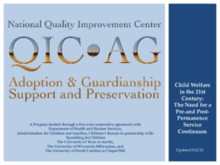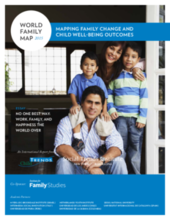Displaying 3201 - 3210 of 4273
The CPC Learning Network will host a webinar on the latest reports of the Measuring Separation in Emergencies (MSiE) project on Thursday, September 24, 2015 from 9am to 11am EDT.
The presentation slides outline the webinar entitled Child Welfare in the 21st Century: The Need for a Pre-and Post-Permanence Service Continuum, which discusses the direction of child welfare in the 21st Century.
This annual report of the World Family Map Project shares the latest data on 16 indicators of family structure, family socioeconomics, family processes, and family culture in multiple countries as well as an original essay focusing on one important aspect of contemporary family life.
Este evento paralelo del Consejo de Derechos Humanos incluyó presentaciones en separación familiar en los contextos africanos, asiáticos, europeos, y latinoamericanos.
This Human Rights Council Side event included presentations on family separation in the African, Asian, European, and Latin American contexts.
The 7th Milestones of a Global Campaign for Violence Prevention Meeting - hosted by the World Health Organization (WHO) at its Executive Boardroom in Geneva, Switzerland - will focus on child maltreatment and youth violence, among other topics.
This 28-minute documentary film, by filmmaker Chloe Sanguinetti, explores the phenomenon of “voluntourism,” a recent trend in which people, typically young people from Western countries, travel to countries in the Global South to volunteer.
This article discusses the work of Against Child Trafficking (ACT), a Europe-based NGO that has been involved in child protection and adoption issues, to help adoptees from India to locate their birth families.
This article describes the negative impacts of institutionalization on children and highlights the advocacy work of Lumos and other organizations to include children deprived of family care in the upcoming UN Sustainable Development Goals.
This animated video from Lumos, narrated by Lumos founder J.K. Rowling, illustrates the “tragic consequences of orphanage care,” and argues that more can and should be done to support families to care for their children, eliminating the use of institutional care.




